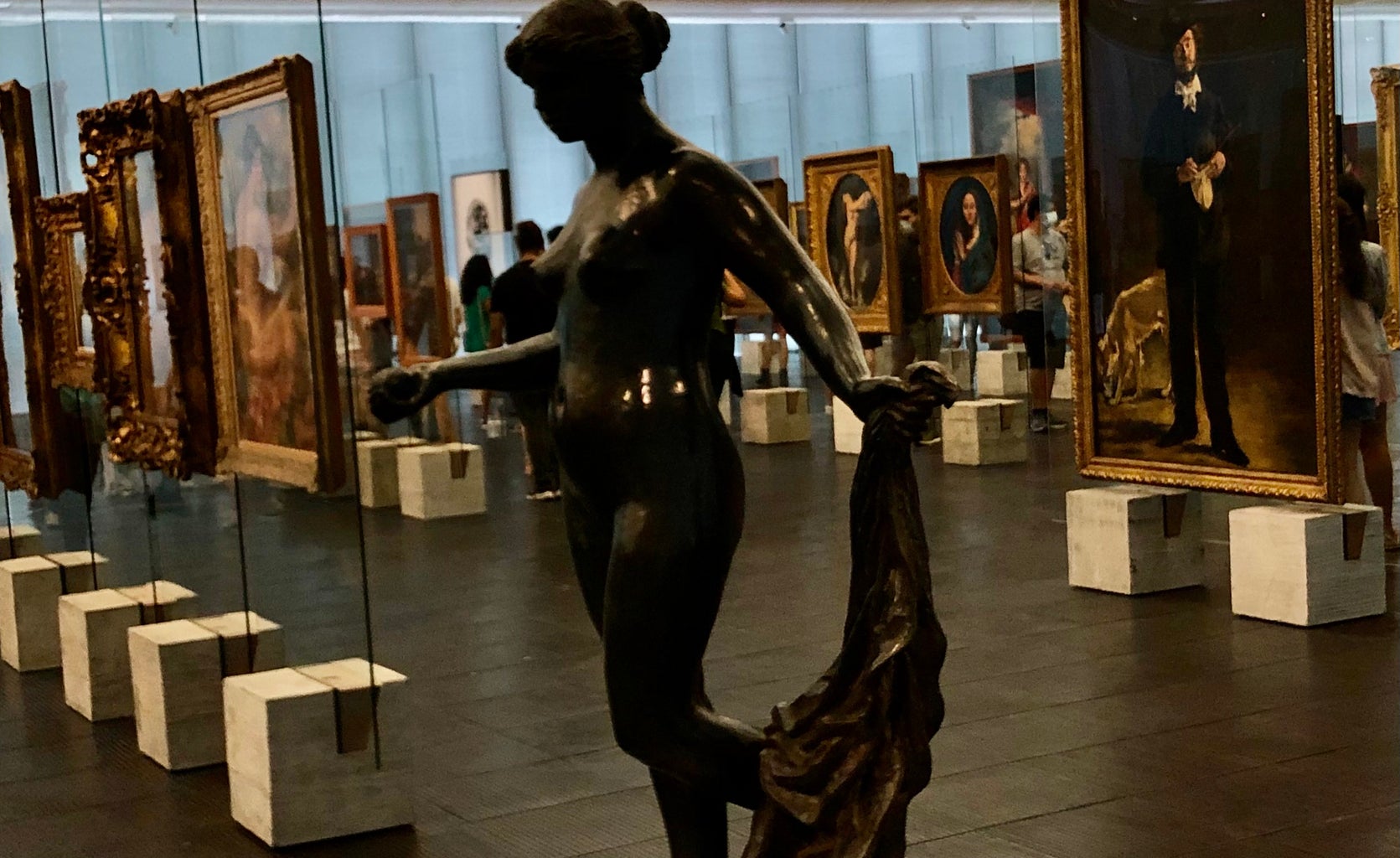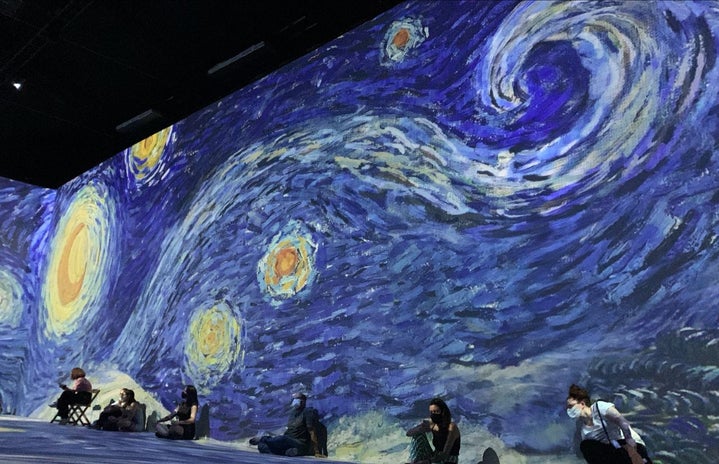While some studies characterise it as an expanding aspect of contemporary digital art, some critics say that it is simply the latest lazy lovechild of TikTok and enterprising warehouse landlords. However, with so many distinct opinions and definitions on it, how can we really know and define what these so-called ‘immersive art experiences’ actually are?
Even further, what is it about these exhibits that draw the general public’s attention? When you have renowned artists like Claude Monet, Frida Kahlo and Vincent Van Gogh (and these are just the ones I can quote from the top of my head) getting their own immersive art exhibitions, all in recent years, it must have something to it.
LET’S START OFF WITH MY OWN EXPERIENCE…
Last year’s May, I had the chance to personally see an immersive exhibition face-to-face. Beyond Van Gogh: The Immersive Experience came to São Paulo and attracted a whole lot of visitors. In only 18 days, 100.000 tickets were sold.
With the help of technology, the artworks of the dutch painter came to life. Projections were capable of teleporting all watchers right inside of Van Gogh’s paintings.
When we stop and think about the fact that there are only four of the artist’ paintings in Brazil, all located at MASP (Museum of Art of São Paulo Assis Chateaubriand), getting the chance to see more of his work up-close is really worth it. And even though I had set my expectations way too high for what I was about to encounter, I still had a good time. For example, there were a lot of Van Gogh’s pieces that I didn’t know about before the exhibition so getting to see and learn a tad more of them really pleasured me.
SO, WHAT REALLY ARE THESE KIND OF EXHIBITS?
On one hand, we have the good-old museums that mainly display original pieces. While on the other, we have these new tech-projection-immersive kinds of art exhibitions which are all about merging the public with the artists’ universe.
And that’s exactly the main difference: An immersive art exhibition focuses on the emotional outlets. By projecting the works in a way that it surrounds the audience, it stimulates thoughts and feelings. This integration of the minds of the audience with the actual artwork helps the visitors to envision the process of creation and build an emotional bond with the artist.
Vanessa Beatriz Bortulucce, Master in History of Art and Culture by the State University Of Campinas, one of the best universities in the country, says that the immersive part of the experience is utterly associated with the notion of space. She explains that, “In general terms, these experiences happen in big places where people have the opportunity to be immersed, thus the name [immersive art exhibitions], in the chromatic and luminous experience of the artists’ works.”
In simpler terms, we could say that immersive exhibitions focus on ways to explore the public’s senses through immersion with the displayed artwork. As Vanessa said during our conversation, the artistic experience of these exhibits occur by the reproduction of the original work on much larger scales. Although, she also affirms the following “I would say that immersive exhibitions can be exercises in sensibility but that they do not replace the original support of the work.”
DISCOURSES AROUND IT AND it’s future
It is not difficult to see that exhibitions like Beyond Van Gogh are strongly able to seduce the public’s eye with its aesthetically pleasing displays and soul immersing experiences. Even with many critics and its high price, the general audience still chooses to save money to visit it.
Of course there will always be the people that go there just for a selfie and some likes on social media. And that’s okay, you do you. After all, we do live in a capitalist society. So there’s no reason to pretend that exhibitions like these don’t also aim for this type of people, it’s the perfect combo for them: more money and free publicity. With things like this we can see that it all reflects on the rise of consumer digital technologies, and the behaviours and expectations that they cultivate.
When asked about the whole high price discourse, Vanessa agreed saying that “It really is quite expensive and I think it is unnecessary for this to happen.” But she also pointed out that “the artistic experience in general is elitist [not just the immersive exhibitions]. Similar to large museums like MASP, which, although they offer free visitation days, it’s mostly weekdays when many people can’t go. [I believe that] gratuity should be more democratic.

In an interview for The Boston Globe, Curtat, a PhD candidate at the University of Quebec at Montreal, went in a similar direction but with a different view and said that “the saddest thing about art is that it’s considered too elitist. But what art brings to people, that’s universal”. Immersive art experiences “have the possibility of providing a wide access for an audience who might think [art] isn’t for them. it’s never going to replace a museum. It’s about providing a different access point”.
I believe that even though it isn’t an act of supreme creativity, we can all agree that it is somewhat distracting and that it does fulfil its purpose. And as they don’t seem to be going anywhere — if anything, they’re growing — we might as well see what it can do.
The article above was edited by Fernanda Miki Tsukase.
Liked this type of content? Check Her Campus Cásper Líbero home page for more!


